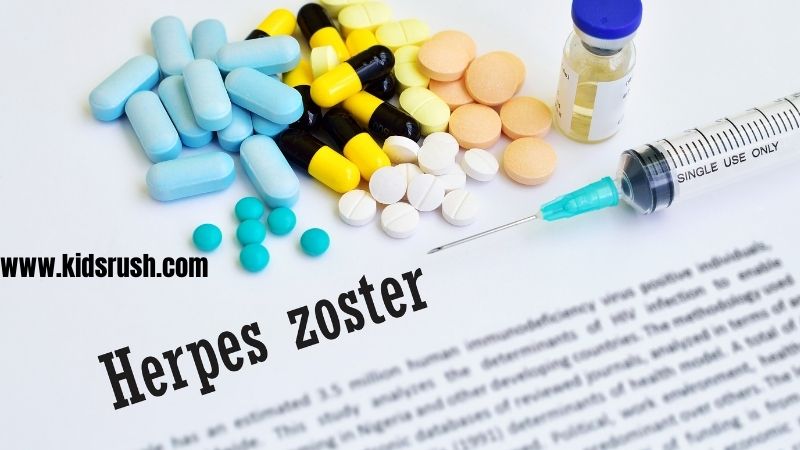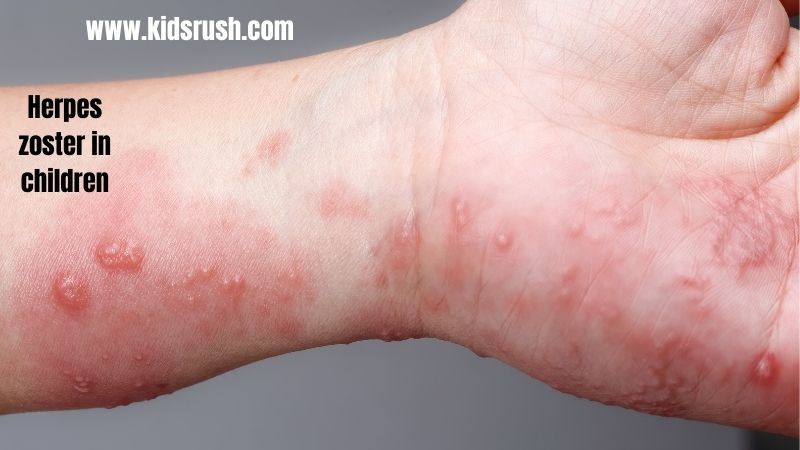Herpes zoster in children: causes, symptoms, and treatments:
Shingles or herpes zoster occur in children, but less often than in adults. How does it manifest? What can cause it? This time we tell you more about this infection. Keep reading!
Herpes zoster in children, also known in popular parlance as “shingles,” is a rare viral infection caused by the reactivation of the varicella-zoster virus. When minors are healthy, the prognosis for this condition is usually good.
However, it is necessary to achieve a timely diagnosis and treatment to avoid possible complications. What are your causes? How to recognize the infection? In the following space, we solve these questions in detail. Keep reading!
Causes of shingles or herpes zoster in children

Shingles can occur in both healthy children and those with underlying immunodeficiency. Its main cause is infection with the varicella-zoster virus, which remains latent in the nervous system for the rest of life. In this way, anyone who has had chickenpox can also get shingles later on.
However, the appearance of the infection in childhood is related to the following:
- Intrauterine Varicella-Zoster Virus (VZV) Infection: The increasing incidence of herpes zoster in otherwise healthy children may be due to a primary varicella infection in the uterus, where immunity is not fully developed.
- Live attenuated virus vaccination: Immune status at the time of primary infection is the most important determinant of childhood herpes zoster. Latent varicella-zoster virus (VZV) has been found in the dorsal root ganglia of children without a history of chickenpox and epidermal involvement.
- Secondary to postnatal exposure to VZV at an early age, in infancy, where the immune system did not fully develop.
- About 3% of pediatric zoster cases occur in children with malignant neoplasms.
According to information published in the Journal of the American Academy of Dermatology, chickenpox in early childhood is a risk factor for herpes zoster in children.
Shingles or Herpes zoster symptoms in children

In general, the evolution of the disease is milder in children, with an average duration of 1 to 3 weeks. Those between the ages of 2 and 12 may have itching and sore lesions. However, no acute neuropathic pain, which is the hallmark of herpes zoster in adults, was observed.
The infection is often localized in areas such as the trunk and buttocks, although it can also appear on the arms, legs, or face. Each child may have different symptoms. Other clinical manifestations are the following:
- Skin hypersensitivity in the area where herpes zoster appears.
- Mild rash, which appears after five days. It first looks like little red spots, and then they turn into blisters.
- Blisters that turn yellow and dry.
- Rash that disappears in a week or two.
- Localized rash on one side of the body.
It is important to differentiate herpes zoster from herpes simplex zosteriform by monomorphic vesicular lesions in the latter, which is more common in children.
Treatment of Shingles or herpes zoster in children

Treatment options for shingles are based on the child’s age, immune status, duration of symptoms, and presentation. The goals of treatment are as follows:
- Limit gravity.
- Limit the duration of pain.
- Shorten the duration of a shingles episode.
- Reduce complications.
The first line of treatment in childhood herpes zoster is oral acyclovir, administered four times a day. Also, treatment with topical antibiotics and zinc sulfate supplements can be started to prevent superinfections.
Children who develop ophthalmic shingles should receive oral acyclovir because of its documented effects on complications, such as anterior uveitis or stromal keratitis.
Aspirin Self-Medication Precautions
Acetaminophen (paracetamol) is the preferred antipyretic agent due to the association between aspirin and Reye’s syndrome (sudden-onset, life-threatening encephalopathy, and liver dysfunction).
Also due to an epidemiological link between ibuprofen and an increased risk of invasive group A streptococcal disease in the context of chickenpox, although not causally.
Important considerations of shingles
Herpes zoster in children is a pathology that is not contagious. But, despite this, whoever suffers from the disease can transmit the chickenpox virus to those who have not yet suffered from it. It has been determined that such a spread is only caused by direct contact with the blisters.
The symptoms of this infection may resemble other skin conditions. A doctor should always be consulted for an accurate diagnosis.
